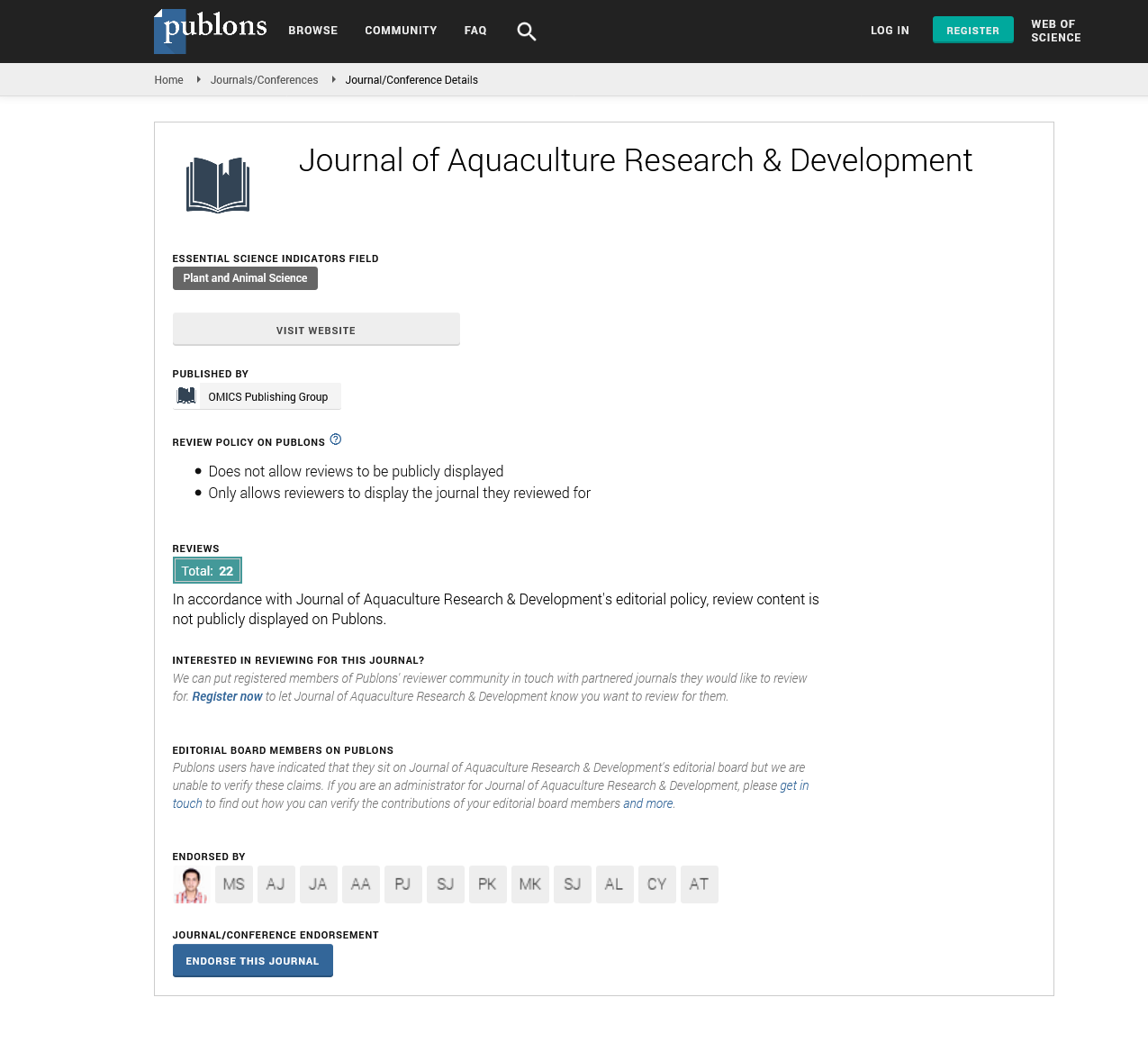Indexed In
- Online Access to Research in the Environment (OARE)
- Open J Gate
- Genamics JournalSeek
- JournalTOCs
- Scimago
- Ulrich's Periodicals Directory
- Access to Global Online Research in Agriculture (AGORA)
- Electronic Journals Library
- Centre for Agriculture and Biosciences International (CABI)
- RefSeek
- Directory of Research Journal Indexing (DRJI)
- Hamdard University
- EBSCO A-Z
- OCLC- WorldCat
- Scholarsteer
- SWB online catalog
- Virtual Library of Biology (vifabio)
- Publons
- MIAR
- University Grants Commission
- Euro Pub
- Google Scholar
Useful Links
Share This Page
Journal Flyer

Open Access Journals
- Agri and Aquaculture
- Biochemistry
- Bioinformatics & Systems Biology
- Business & Management
- Chemistry
- Clinical Sciences
- Engineering
- Food & Nutrition
- General Science
- Genetics & Molecular Biology
- Immunology & Microbiology
- Medical Sciences
- Neuroscience & Psychology
- Nursing & Health Care
- Pharmaceutical Sciences
Opinion - (2025) Volume 16, Issue 3
Microplastic Presence in Farmed Fish and Shellfish Environments
Raquel Gomes*Received: 25-Feb-2025, Manuscript No. JARD-25-29136; Editor assigned: 27-Feb-2025, Pre QC No. JARD-25-29136 (PQ); Reviewed: 13-Mar-2025, QC No. JARD-25-29136; Revised: 20-Mar-2025, Manuscript No. JARD-25-29136 (R); Published: 27-Mar-2025, DOI: 10.35248/2155-9546.25.16.974
Description
Aquaculture now accounts for over 50% of the consumption. Expansion of this sector has occurred alongside a global increase in plastic waste. Microplastics plastic fragments under 5 mm have been detected in natural waters, sediments and biota.
Aquaculture facilities, particularly coastal net-pens and land-based ponds, are vulnerable to microplastic influx from rivers, atmospheric deposition and intentional use of plastic materials such as nets, cages and feed bags.
Exposure to microplastics may affect health of farmed organisms, alter product quality and raise safety and certification issues. Understanding this interplay is vital to maintaining sustainable production and consumer confidence.
Sources and pathways of microplastics
Environmental water inflow: Coastal cages and open water farms receive wastewater and runoff that carry microplastics from urban regions, agriculture and plastic-processing sites. Even remote ponds may contain particles via wind or seepage.
Aquafeed components: Feeds often include fishmeal, oil and plant proteins, which may be contaminated during processing or packaging. Research indicates microplastic particles in commercial feed batches consumed by shrimp and tilapia.
Equipment and infrastructure: Aquaculture relies on plastic nets, cages, hoses, pipes and buoys. As these materials degrade in sun, wind and water, they release nanoplastics into the production system.
Accumulation in aquaculture organisms
Ingestion by fish and shellfish: Studies have documented microplastic presence in guts and tissues of farmed species including carp, tilapia, shrimp and mussels. Bivalves, often consumed whole, retain particles in gills and digestive tissues.
Translocation and bioaccumulation: Some microplastics penetrate gut epithelium and enter circulatory or lymphatic systems. Nanoplastics may cross biological barriers, including the blood-brain barrier, though evidence in farmed species remains preliminary.
Physiological effects: Laboratory experiments show that microplastic consumption may reduce feeding, slow growth and alter gut microbiota. Effects on enzymatic activity and histological changes in respiratory and digestive tissues have also been observed.
Human exposure and food safety
Consumer intake estimates: Analysis of aquaculture products has revealed microplastics in farmed mussels, shrimp and fillet. Annual intake through seafood varies widely but remains a concerning dietary source, especially when combined with microplastics from water, air and packaging.
Potential health risks: Human exposure to ingested plastic particles may cause local inflammation, oxidative stress and interfere with gut functions. Some particles carry hydrophobic chemicals or plasticizers, raising toxicity concerns.
Packaging interactions: During handling and storage, processed seafood may pick up particles from plastic packaging. Processed and ready-to-eat seafood should be handled in packaging that minimizes particle transfer.
Detection and analytical methods
Sampling protocols: Adequate assessment requires collecting water, sediment, feed and tissue samples using noncontaminating tools. Standardized protocols aim to reduce airborne and laboratory-based contamination during handling.
Separation techniques: Density separation using sodium chloride or zinc chloride solutions isolates microplastics, enzymatic digestion removes tissue matrix while preserving plastic particles.
Quality control: Blanks, positive controls and laboratory air monitoring are essential to avoid false positives. Data should include particle count, polymer type and size distribution.
Mitigation strategies
Infrastructure materials: Switching to biodegradable, UV-stabilized, or metal alternatives can reduce plastic shedding. Regular maintenance minimizes wear and particle release and collecting floating debris prevents reintroduction to production zones.
Feed improvement: Production facilities should test feeds for microplastics offline. Using paper bag packaging or reusable containers reduces material shedding during transport.
Water treatment and filters: Installing inlet filters or settling tanks helps remove particulate matter. Specialized filters for closed-flow systems can mitigate contamination before water reuse or discharge.
Site management: Set up away from plastic-polluted waters, conduct regular water monitoring and apply farm-specific standard operating procedures.
Microplastic contamination presents a dilemma for aquaculture’s expansion. Environmental, feed-based and system-derived sources introduce particles into organisms and food chains. While definitive health risks remain under investigation, current evidence calls for proactive measures to reduce contamination. Adoption of improved materials, farm protocols, monitoring strategies and regulatory incentives can preserve product safety, consumer confidence and sustainability in aquaculture.
Citation: Gomes R (2025). Microplastic Presence in Farmed Fish and Shellfish Environments. J Aquac Res Dev. 16:974.
Copyright: © 2025 Gomes R. This is an open-access article distributed under the terms of the Creative Commons Attribution License, which permits unrestricted use, distribution, and reproduction in any medium, provided the original author and source are credited.

